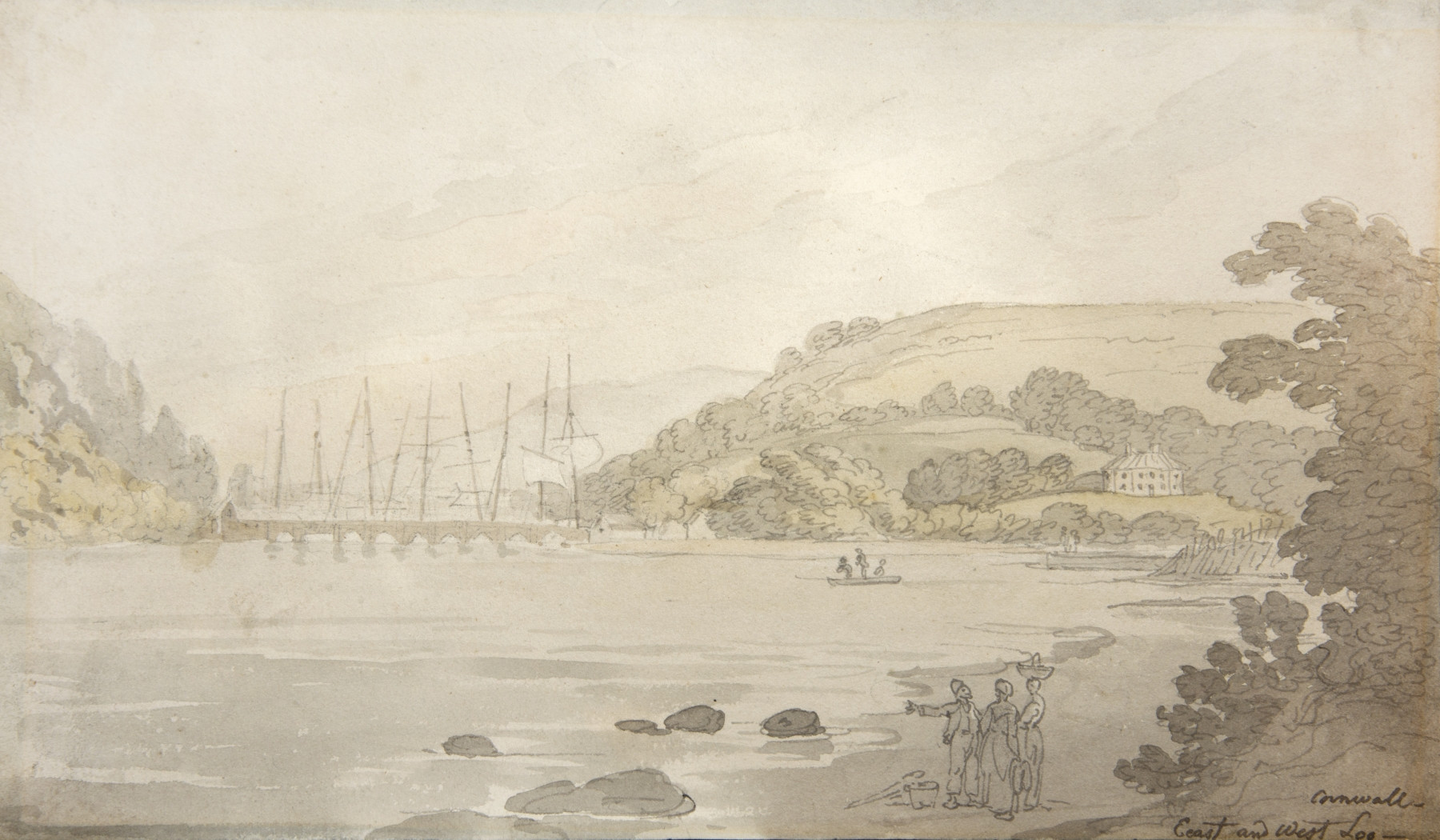
(click image to enlarge)
Between the 1790s and 1817, Thomas Rowlandson made frequent tours of the West Country. He usually based himself at Hengar House, St Tudy, six miles north of Bodmin, which was the Cornish estate of his close friend and most important patron, the banker, Matthew Michell (1751-1817). He produced many and varied drawings and watercolours of the region, significant groups of which were etched and published as A Series of Views in Cornwall, Devon, Dorset, &c (1805) and Views of Cornwall (1812), while others were included in more diverse topographical collections.
Looe is about 20 miles from St Tudy, on the south coast of Cornwall. As described by Britton and Brayley in the second volume of The Beauties of England and Wales (1801), ‘East and West Looe are situated at the mouth of the river which bears the same name, and are connected by a long narrow, irregular bridge of fifteen arches’ (page 397). This bridge – replaced in 1853 by the current seven-arched one – can clearly be seen in Rowlandson’s watercolour, in a view downstream that takes in the confluence of the river’s two tributaries. To the right stands the eighteenth-century house, Polvellan Manor, which, until his death in 1814, was the seat of Colonel John Lemon (and is now in a sad state of ruin). Rowlandson also etched a view of West Loo, Cornwall, possibly in 1822.
Ilfracombe is about 60 miles from St Tudy, on the north coast of Devon, so Rowlandson probably visited it en route to Hengar House, rather than as a day trip from it. Rowlandson’s panoramic watercolour would have made a suitable illustration for Britton and Brayley’s description of the place in the fourth volume of The Beauties of England and Wales (1803):
the most northerly town in Devonshire ... seated on the coast in the hundred of Braunton, and ... a rich and populous sea-port. It derives considerable trade from the herring fishery in the Bristol Channel. The peculiar situation and safety of the harbour, occasions many vessels to put in here, when it is dangerous for them to enter the mouth of the Taw for Barnstaple. In consequence of this circumstance, many merchants of the latter place transact their business here. Nature and art seem to have jointly combined in forming the harbour, which appearing like a natural bason, is almost surrounded by craggy heights, overspread with foliage. On three sides the rocks rise in a semi-circular sweep; and on the fourth a bold mass of rock stretches nearly half way across the mouth of the recess; affording protection to the little cove from the northern tempests. This rock rises nearly to a point; and on the top is erected a light-house, which has the appearance of a place of worship. (page 267)
Other watercolours of Ilfracombe by Rowlandson include Ilfracombe Beach, Devon, (1791, National Gallery of Ireland), which shows a more close-focussed view of its harbour.
Mounted